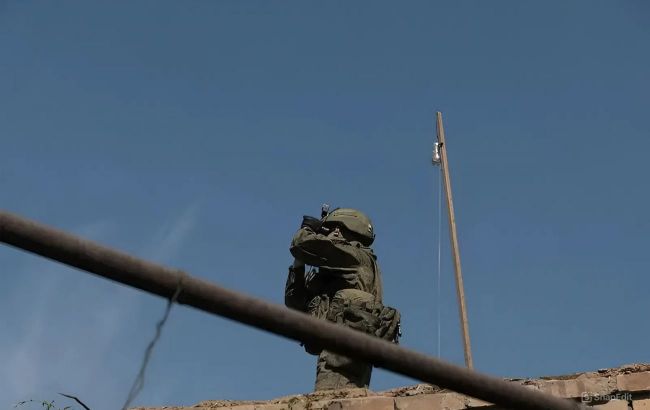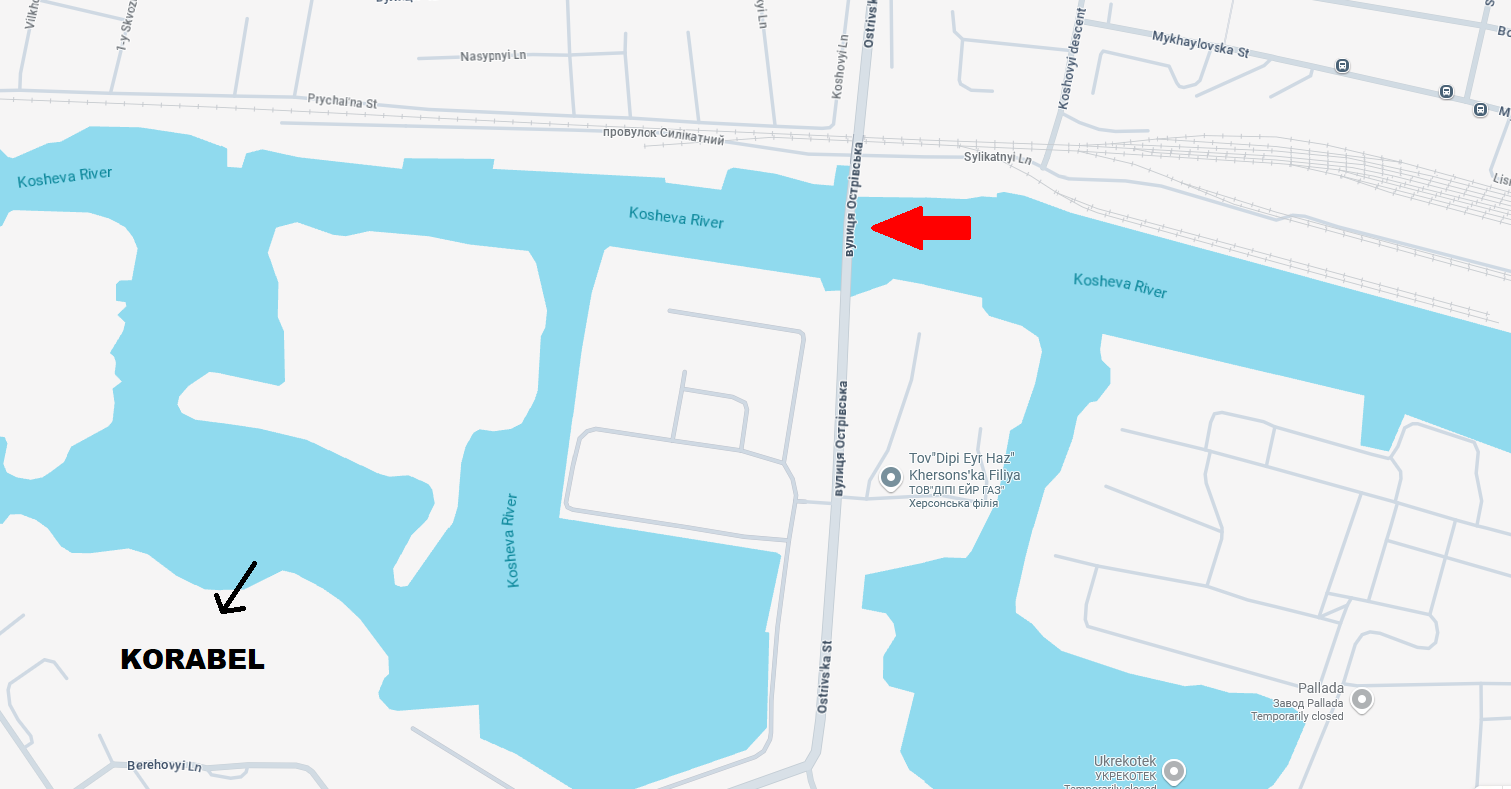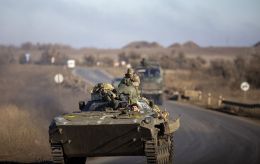What's behind Russian attacks on Kherson's key bridge — military plan or scare tactic?
 Photo: Russian troops may be attempting to cut off Ukrainian Armed Forces' logistics (illustrative photo mil.ru)
Photo: Russian troops may be attempting to cut off Ukrainian Armed Forces' logistics (illustrative photo mil.ru)
Russian forces have been striking the bridge to the Korabel (Ostriv) neighborhood in Ukraine's Kherson for several days. Amid this, rumors emerged about a possible preparation for a Russian force landing.
RBC-Ukraine explains what is happening and why Russia is targeting the Ostrivskyi Bridge in Kherson.
Key questions:
- Russian forces have struck the Ostrivskyi Bridge with guided bombs for three consecutive days.
- The bridge sustained damage, and traffic is restricted, but it remains passable.
- The Ostrivskyi Bridge is the only road connection to the Korabel neighborhood.
- Residents are urged to evacuate while it is still relatively safe.
- There are no signs of preparations for crossing the Dnipro River or advancing on Kherson.
Details on the Russian attacks on the Ostrivskyi Bridge
For three days, Russian forces have hit the Ostrivskyi Bridge with guided aerial bombs. The Kherson Regional Military Administration released video footage showing the damage. It reveals a hole piercing the road surface.
Deputy Head of the Kherson Regional State Administration, Oleksandr Tolokonnikov, told RBC-Ukraine that two bombs struck the area yesterday: one hit the bridge, the other a residential area. The administration later clarified that, besides the bridge, three private houses and an apartment building were damaged.
Attacks resumed today. Initially, reports appeared about restricted traffic on the bridge due to strikes and enemy drone activity. Later, a new video of the airstrike damage was released. It also emerged that a 65-year-old man died.
Tolokonnikov said the latest strikes were less severe than the previous ones. Despite the damage, the bridge still stands and remains passable. Experts will assess the full condition of the crossing tomorrow.
Russian social media claims the strikes used guided bombs based on FAB-1500 or FAB-3000 bombs. Vladyslav Voloshyn, spokesperson for the Southern Defense Forces of the Armed Forces of Ukraine, emphasized that an official commission is still investigating. Only after its conclusion can the exact type of munitions be confirmed.
Why the Ostrivskyi Bridge matters
The Ostrivskyi Bridge is located in the southwest of Kherson. It is the only automobile bridge connecting the city with the Korabel neighborhood.

Photo: The Ostrivskyi Bridge connects the main part of Kherson with the Korabel neighborhood (google.com/maps)
Tolokonnikov noted that constant shelling and enemy FPV drone activity have already complicated civilian logistics. Currently, only food deliveries are conducted. Residents must travel to safer areas for medical supplies.
Local authorities increasingly urge residents to evacuate Korabel while it remains relatively safe. If bridge traffic stops, evacuation will continue, but doing it now is safer, he added.
According to Oleksandr Prokudin, Head of the Kherson Regional State Administration, about 1,800 people remain in the neighborhood. This includes 187 people with limited mobility and 31 children. Those agreeing to evacuate are promised accommodation in comfortable locations.
"I urge Korabel residents to leave. Do not risk your lives. You will receive help at every step — from departure and settlement to further living," Prokudin said.
The Southern Defense Forces noted that the Ostrivskyi Bridge is primarily used for civilian transport. No military facilities are near it.
Why Russia is targeting the Ostrivskyi Bridge
Systematic attacks on Ostriv Bridge have sparked rumors that Russia is preparing a landing force on the island neighborhood. Enemy sources actively spread these claims. There are also concerns that the occupiers may be conducting strikes on Ukrainian bridges with guided bombs.
Voloshyn said there are 7-8 combat engagements daily near the islands and Antonivskyi railway bridge. Russian troops are regrouping and trying to seize footholds on the islands. Meanwhile, drones and artillery shell the entire right bank.
In an exclusive comment to RBC-Ukraine, he said Russian forces strike all Kherson districts. Korabel is simply closer to their positions on the left bank.
"They strike to create a so-called 'dead zone' along the Dnipro River, leaving no buildings or intact shelters that the Defense Forces could use for protection," Voloshyn explained.
They use similar tactics on other fronts, destroying a 5-7 km-wide strip, for example, near Orikhiv and Stepnohirsk in the Zaporizhzhia region. In Kherson, the enemy is doing the same, hitting coastal neighborhoods.
Voloshyn identified two goals of the attacks on the Ostrivskyi Bridge: terrorizing civilians and attempting to cut off Ukrainian Armed Forces logistics.
Regarding possible preparations for an offensive on Kherson by crossing the Dnipro, the Southern Defense Forces representative rejected the threat for now. He said the river is quite wide here and includes several channels and islands.
Voloshyn said that if the enemy planned an offensive on Kherson itself, it would first need to control the island zone. He added that although they are trying, carrying out only one or two assaults per day per island is not a sign of a large-scale crossing.
"If they planned larger operations, they would require substantial forces and resources. With today's intelligence capabilities, it would be hard to conceal such a buildup. Our intelligence and Defense Forces have not detected such forces," he added.
Sources: Kherson Regional Military Administration Head Oleksandr Prokudin, Deputy Oleksandr Tolokonnikov, and an exclusive comment from Southern Defense Forces Spokesperson Vladyslav Voloshyn.
As a reminder, the evacuation zone in the Kherson region was recently expanded. Mandatory evacuation applies to families with children in the Korabel, Yantarnyi-1, and Yantarnyi-2 neighborhoods, and all streets below toward the Dnipro.
Earlier reports said Russian forces tripled assaults on the islands near Kherson.

